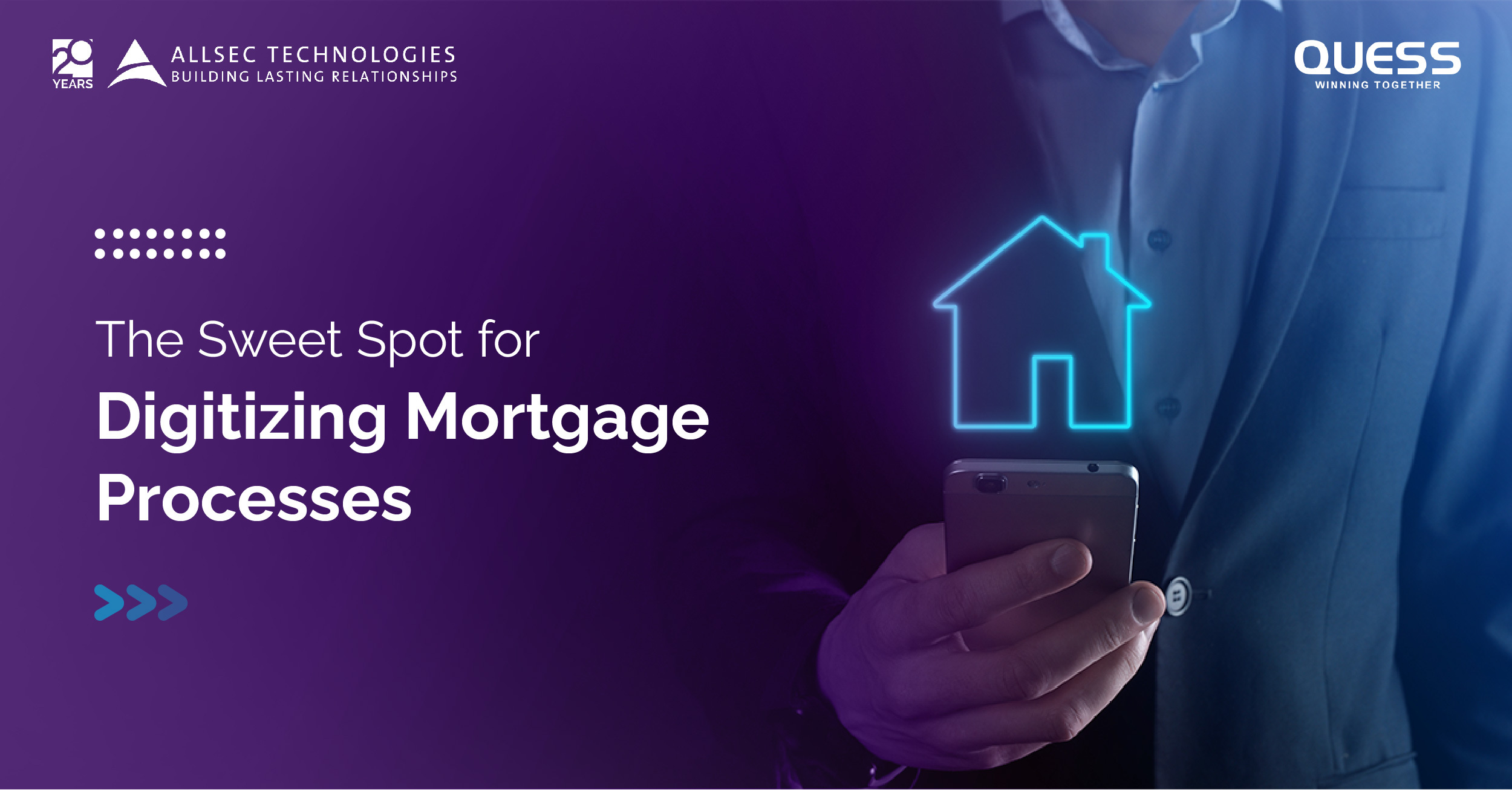
Different Areas of Mortgage Origination That Can Be Digitized
Mortgage origination is one aspect of the financial services industry that still struggles with legacy processes. The magnitude of physical paperwork that is involved in mortgage processing, especially at the back-end, greatly limits efficiency and productivity. Manual intervention is often used to verify whether a borrower is eligible for a loan. Mortgage providers also need to make sure that all the information is complete and accurate, which usually requires human assistance once again.
Digitization has percolated some areas of the industry, including the mortgage loan application process where borrowers can apply for a loan online through a mobile or computer. Yet, the industry still struggles without a comprehensive end-to-end digital solution.
Problems With Digitization
Not all digital processes are created equal. Different processes address different needs and can be complicated further by certain errors in the process. For instance, traditional optical character recognition (OCR) software that is used to digitize paper documents sometimes runs into trouble with recognizing text at certain font sizes or ones that are underlined or italicized. At other times, OCR software generates plain text files when what the mortgage service provider really wants is digitally recognized text that is filled into digital forms.
When software fails to pick up relevant information, lenders have to manually copy and paste the data into digital forms. This is not only time-consuming but also prone to human error. The same problem persists with areas such as digitization of loan documents for audit purposes. Loan files are often located in different places and collating them can take time and extra employee effort.
The AI Solution
Artificial intelligence has solved many problems in numerous industries, including mortgage origination. Take the example of machine vision software, which is built to recognize images and videos. They can easily distinguish between different fonts, text formatting, handwritten information and even locate necessary information within a given chunk of text.
Loan processors and underwriters can use AI software to pick out specific information like a potential borrower’s social security number, proof of income, proof of funds in a bank account, etc. They can also leverage this software to identify missing information. This will considerably reduce mortgage processing times and also introduce an additional layer of quality control.
Another area that AI can prove to be useful is compliance audits. This is an area that is costly for mortgage providers. Any errors with regulatory compliance can cost lenders a bomb. AI-driven search and discovery software can help lenders go through historical documents so that they can align easily with different regulatory and privacy requirements, thereby reducing compliance errors and costs.
The Sweet Spot
While there is still a long way to go for complete digitization of the mortgage process, there are areas such as loan origination process and collection of information, which are ripe for technological intervention. Using AI and machine learning, mortgage companies can verify and authenticate information, catch missing details and smoothen out the overall verification process.
While human intervention may still be required in some stages of mortgage servicing origination such as underwriting and back-end processing that software may not be able to access, there’s plenty of room to digitize areas in between with considerable success to make mortgage servicing quicker, more efficient and consumer-friendly.


